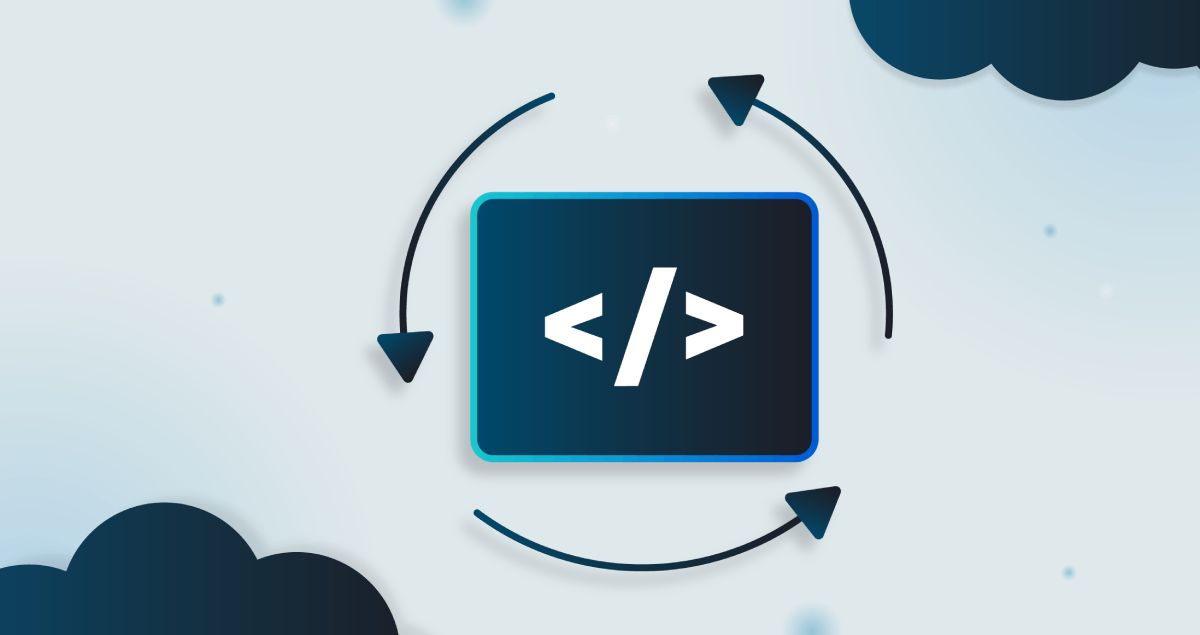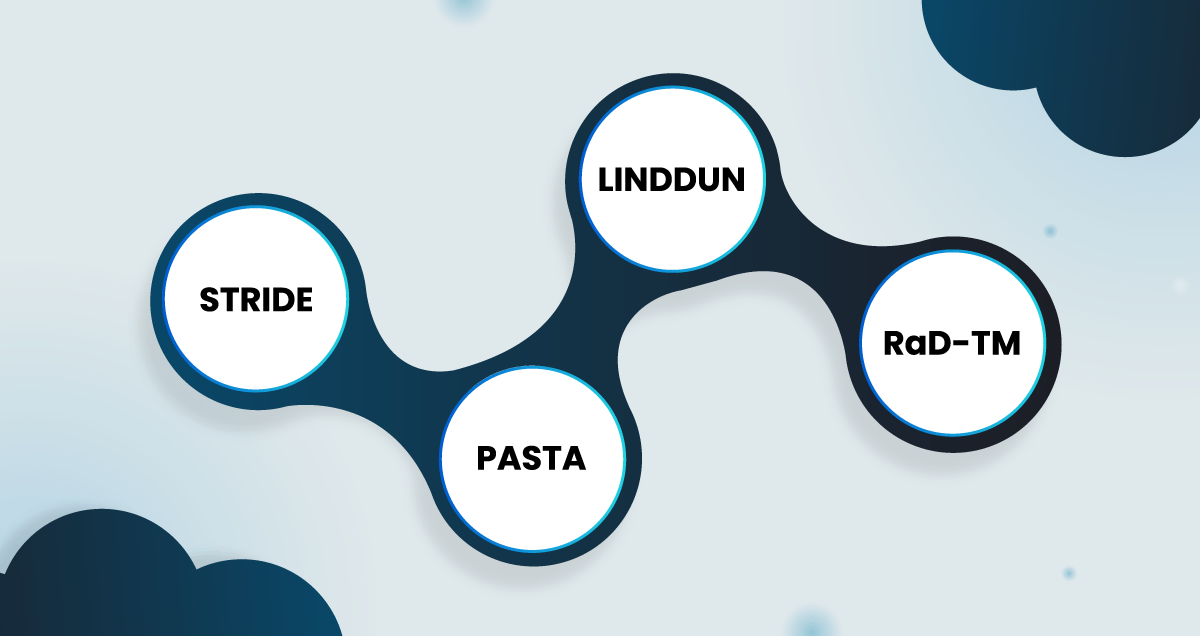If you’ve ever worked on a project where requirements kept changing, deadlines were pushed back, and the first time anyone thought about security was after deployment, you’re not alone.
Most developers have likely been there at some point during their careers. Following a structured software development life cycle (SDLC) helps to prevent these problems, but only if it’s properly planned and put into practice by the whole team.
Let’s take a look at what the software development life cycle is, the stages involved, and how security fits in.

What Is the Software Development Life Cycle?
The software development life cycle helps teams go from a vague idea for an application to a working product.
More formally, it’s the method development teams use to plan, build, test, deploy, and maintain software in a structured way. If done correctly, there shouldn’t be loads of last-minute bugs and security issues.
It consists of various phases, each with a specific purpose. When all of these are followed, it helps ensure that software development meets user needs and business goals.
Pretty much every serious software organization has some version of the SDLC to keep projects consistent and maintain quality. And it’s flexible as it works across different SDLC models, such as Waterfall, Agile, or DevOps.
The SDLC doesn’t just have one way of working; it’s more of a framework you can adapt. Whatever the approach, the goal remains the same: to break down a big project into manageable stages.
Phases of the Software Development Life Cycle
The software development lifecycle is usually comprised of key phases, including planning, design, implementation, software testing, deployment, and maintenance.
Some teams prefer to modify steps for software projects or rename the SDLC phases, but the main ideas stay the same.
1. Planning Phase
The planning phase is the beginning of the software development process. The development team ideally sits down with stakeholders to work out the goals, scope, and what a successful outcome looks like.
It includes gathering detailed requirements, identifying risks, estimating time and cost, and figuring out who’s doing what.
As a developer, this is the time to ask questions such as:
-
What is the end goal?
-
What’s not included?
-
Are there systems or APIs we’ll need to integrate with?
-
What are the security requirements?
The result of this phase is usually a software requirements specification, a document that outlines what the software should do, as well as the constraints and risks associated with it.
Getting this part right saves a lot of time and confusion later. And yes, probably a few late nights, too.
2. Design
Once the planning is completed, the design phase turns the requirements into a clear plan. This is where the team starts thinking about how everything will work.
Architects and developers collaborate to outline the system architecture, database schema, tech stack, and high-level components.
There are typically two levels of design here:
-
High-level design (HLD): Covers the overall architecture, components, and how they interact.
-
Low-level design (LLD): Gets into the details, including function definitions, database tables, error handling, etc.
Importantly, security should also be part of the design discussion. Threat modeling is especially useful at this stage to identify potential vulnerabilities before any code is written.
Solutions like ThreatCanvas help developers integrate threat modeling into their workflow.
3. Implementation
The implementation phase is where the coding begins.
The development team turns the design specification and software requirements into a working software application.
Software developers start writing code, building features, and integrating systems. Depending on the project, this phase might be handled by different teams working on front-end, back-end, and infrastructure in parallel.
This phase benefits from version control, code reviews, and automated testing from the start. The idea is to catch issues early rather than try to fix them right before release.
Secure coding practices really matter here. For example, input validation, proper authentication, and avoiding hardcoded secrets can prevent many common vulnerabilities. Development teams should be trained to code securely to detect and mitigate threats.
4. Testing
Once there’s a working version of the software, it’s time to test whether it does what it’s supposed to do and check that it’s secure. Or, rather, it’s the phase where QA breaks everything you thought was working!
Software testing typically includes:
-
Unit testing: Individual pieces of code.
-
Integration testing: How modules work together.
-
System testing: The whole application.
-
Security testing: Checking for vulnerabilities like SQL injection, XSS, or misconfigurations.
Automated tests are great for speed and consistency, but manual testing is still important for catching edge cases and user experience issues.
This phase helps make sure the product functions properly and meets requirements, including the non-functional ones like performance, security, and accessibility. The goal is to fix bugs and refine the application before launch.
5. Deployment
After passing all the tests and probably some last-minute fixes, it’s time to launch. (Hopefully not on a Friday afternoon!)
Software deployment can involve pushing the code to the production environment, releasing a mobile application, or shipping software to clients. How this looks will vary depending on the team and project. For some, it’s a one-time release; for others, it’s a continuous deployment pipeline.
It should also include monitoring setup, logging, configuration management, and rollback plans in case of any issues.
From a security perspective, this is the time to double-check things like:
-
Are environment variables and secrets handled properly?
-
Is HTTPS available?
-
Are access controls configured correctly?
6. Maintenance and Monitoring
Just because the software is live doesn’t mean the job is done. Maintaining software is crucial.
In the maintenance phase, the team monitors performance, fixes bugs, patches security issues, and may even add new features based on user feedback. In a lot of ways, this phase never really ends, especially for long-term projects or SaaS products.
Keeping up with patches (including third-party libraries), updating documentation, and responding to incidents are all part of ongoing maintenance. It’s also a chance to collect real-world usage data and continually improve the product.
This is where security can sometimes be forgotten, but it shouldn’t be. Vulnerabilities often come from outdated dependencies, exposed APIs, or misconfigured services. Staying on top of these reduces risk over time.
SDLC Models
There are a variety of software development life cycle models, depending on the team, project type, and business preferences.
Waterfall Model
The classic model is sequential and linear, with each phase depending on the completion and validation of the previous phase. Each phase must be completed before the next begins.
Agile Model
Agile is a development approach that breaks projects into smaller iterations or sprints. One of the most popular frameworks for doing this is Scrum, which includes roles such as the Scrum Master to help keep everything going as planned.
Iterative Model
This approach starts with a basic version of the software and improves it through repeated cycles. The iterative model enables teams to develop innovative solutions by continuously refining the software through each cycle.
V-Model (Verification and Validation)
An extension of Waterfall that focuses on testing at every stage. This approach helps ensure higher-quality software by validating each phase before moving forward.
Spiral Model
This model combines design and prototyping with a strong focus on risk analysis. The Spiral model incorporates cost estimates at each iteration to help manage project budgets and risks.
For most developer teams today, Agile or DevOps-based SDLCs are the norm, as they align well with CI/CD pipelines and quick feedback loops.
Addressing Security in the SDLC
Sometimes, security in the software development process gets left until the end, when it’s the hardest and most expensive to fix. However, that’s changing. With shift-left practices becoming more mainstream, developers are expected to think about security from the outset.
Unlike traditional software development, where security was often treated as a separate phase, the SDLC addresses security by integrating security practices and risk assessments into every phase.
Modern SDLC models, like Agile and Iterative, make it much easier to build security into the process from the start. Instead of waiting until the end to test for issues (which is often too late), these models encourage ongoing testing and regular check-ins on security risks.
This shift has also paved the way for developer-friendly approaches, such as RaD-TM (Rapid and Developer-Driven Threat Modeling). RaD-TM integrates threat modeling into the daily workflow, making it faster, more practical, and more likely to get done.
In contrast, older development methods tended to add security only at the end, often after the bulk of the work was already complete. And that’s usually when the bigger, more expensive problems show up.
Security in Each Phase
Here’s how security fits naturally into each SDLC phase:
-
Requirements: Define security needs early, such as data protection, access control, and compliance.
-
Design: This is a prime moment for threat modeling, visualizing what could go wrong before you even write code.
-
Development: Use secure coding practices and static analysis tools.
-
Testing: Security testing is a key activity during this phase, including running security tests, dynamic scans, and fuzzing.
-
Deployment: Implement secrets management, proper access controls, and secure configurations.
-
Maintenance: Patch quickly, monitor for vulnerabilities, and audit your dependencies.
Common Challenges in Software Development
Software development rarely goes exactly as planned due to changing requirements, tight deadlines, and technical problems.
Scope creep happens when new requirements, features, or changes keep getting added to a project without proper planning. In the context of the SDLC, it often leads to delays, budget issues, and a reduction in quality.
Technical challenges include integrating with legacy systems or designing for scalability, which can also slow things down.
At the same time, keeping everyone on the same page, across teams and stakeholders, takes good communication and planning. Ultimately, the product should meet business objectives and deliver what users truly need.
Best Practices for Software Development
The most successful development teams don’t just write code; they follow best practices that help them build reliable and maintainable software.
These practices guide the team through each phase of development, helping reduce errors, improve collaboration, and deliver a product that meets user needs and business goals.
Teams should take the time to understand what needs to be built, which lays the foundation for everything that follows. A well-defined design spec gives developers the direction they need to build efficiently.
And good communication is just as important as good code. When teams work together and stay aligned, issues are easier to catch and fix early. Version control, shared documentation, and open channels for feedback all support improved delivery.
When these practices are integrated into the process, the result is software that not only works but also performs well in the real world.
Why the Software Development Life Cycle is Important
If developers are already using git, writing tests, and pushing code through a pipeline, they’re part of an SDLC, whether it’s documented or not.
A well-implemented SDLC improves customer satisfaction by delivering reliable and user-friendly software. These benefits are rooted in established software engineering practices.
Following a defined software development life cycle isn’t just good practice; it’s what keeps software projects from becoming messy and unmaintainable.
Having a structured approach brings a host of benefits:
-
Better planning and estimation: Knowing what happens at each stage helps teams estimate time, cost, and resources more accurately.
-
Improved collaboration: The SDLC defines roles, responsibilities, and handoffs, reducing confusion between developers, testers, architects, and stakeholders.
-
Higher software quality: With testing and validation built into every stage, bugs are caught earlier, and code is more robust.
-
Reduced risk: Structured processes help identify design flaws, security gaps, and other issues long before they reach production.
-
Faster and safer delivery: Ironically, taking the time to follow an SDLC speeds things up by reducing rework and uncertainty.
-
Stronger security posture: Security considerations can be embedded into every phase, from requirements and threat modeling to deployment and monitoring.
How SecureFlag Supports the Software Development Life Cycle
At SecureFlag, we believe secure coding should begin with the very first keystroke and continue throughout the entire development process. That’s why our platform helps developers improve their security skills directly within their workflow.
Through hands-on labs built around real-world vulnerabilities, developers can learn by doing, not just reading.
SecureFlag offers training paths aligned with the technologies and challenges developers face every day, from building web applications and integrating APIs to working across modern development stacks.
For those wanting a more in-depth look into SDLC security, there’s also a dedicated learning path on the best practices for securing every phase of the life cycle.
And with ThreatCanvas, teams can scale secure design practices with ease. It supports threat modeling across every phase of the software development life cycle and integrates seamlessly into agile or DevOps workflows.
Interested in seeing SecureFlag in action? Book a free demo!


